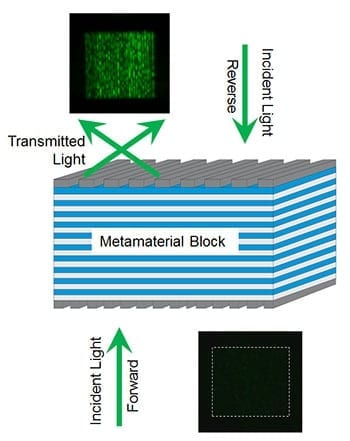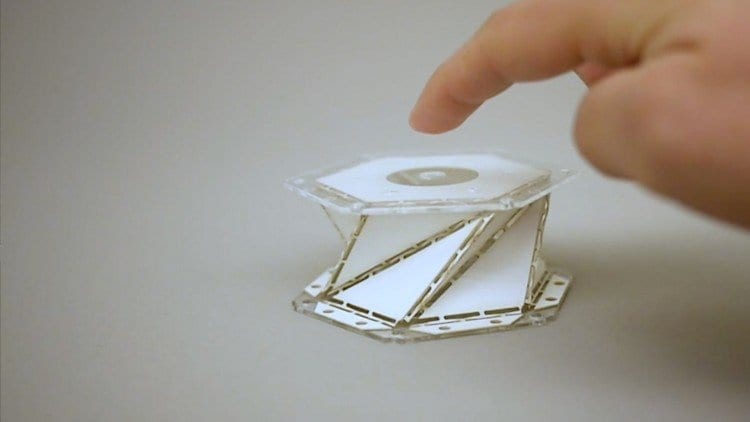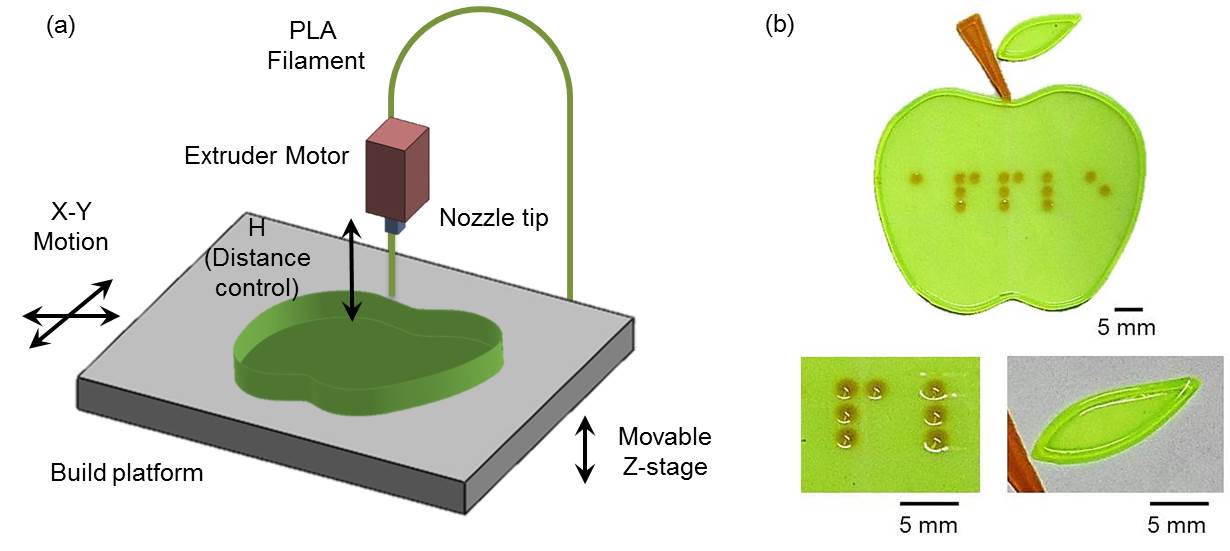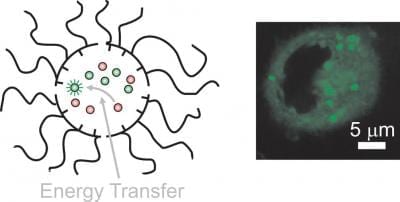The light-warping structures known as metamaterials have a new trick in their ever-expanding repertoire.
Researchers at the National Institute of Standards and Technology (NIST) have built a silver, glass and chromium nanostructure that can all but stop visible light cold in one direction while giving it a pass in the other.* The device could someday play a role in optical information processing and in novel biosensing devices.
In recent years, scientists have designed nanostructured materials that allow microwave or infrared light to propagate in only one direction. Such structures hold potential for applications in optical communication—for instance, they could be integrated into photonic chips that split or combine signals carried by light waves. But, until now, no one had achieved one-way transmission of visible light, because existing devices could not be fabricated at scales small enough to manipulate visible light’s short wavelengths. (So-called “one-way mirrors” don’t really do this—they play tricks with relative light levels.)
To get around that roadblock, NIST researchers Ting Xu and Henri Lezec combined two light-manipulating nanostructures: a multi-layered block of alternating silver and glass sheets and metal grates with very narrow spacings.
In the future, the new structure could be integrated into photonic chips that process information with light instead of electricity. Lezec thinks the device also could be used to detect tiny particles for biosensing applications.
Read more . . .
The Latest on: Metamaterials
[google_news title=”” keyword=”Metamaterials” num_posts=”10″ blurb_length=”0″ show_thumb=”left”]
via Google News
The Latest on: Metamaterials
- SkyWater and Lumotive Announce Qualification and Production Start for World’s First Commercially Available Optical Beamforming Chipon May 1, 2024 at 4:05 am
SkyWater Technology (NASDAQ: SKYT), the trusted technology realization partner, and Lumotive, a pioneer in optical semiconductor technology for 3D sensing, announced today that the companies have ...
- Turning Invisible Dark Matter Into Visible Lighton April 28, 2024 at 3:05 pm
Explorations in dark matter are advancing with new experimental techniques designed to detect axions, leveraging advanced technology and interdisciplinary collaboration to uncover the secrets of this ...
- New “Metafluid” Liquid Can Be Programmed To Adapt To Different Situations It Encounterson April 27, 2024 at 6:32 am
Researchers say they believe this is an intriguing development in the fairly new field of metamaterials. Their “intelligent liquid” has a unique structure that allows it to alter its properties ...
- Programmable liquid hints at widespread applicationson April 26, 2024 at 7:38 am
A 'metafluid' formed from collapsible elastic shells suspended in oil exhibits very different properties at different pressures ...
- Metamaterials articles from across Nature Portfolioon April 4, 2024 at 5:00 pm
Metamaterials are engineered structures designed to interact with electromagnetic radiation in a desired fashion. They usually comprise an array of structures smaller than the wavelength of interest.
- Team demonstrates an ultra-broadband tunable terahertz absorber of graphene and hierarchical plasmonic metamaterialson April 1, 2024 at 12:56 pm
Compared to static passive physical systems, tunable metamaterials can dynamically manipulate electromagnetic waves, improving multidimensional control of the optical response. There are two ...
- Metamaterials and Metasurfaces: Engineered Structures Revolutionizing Light and Matter Interactionson August 18, 2020 at 1:09 pm
What are metamaterials and what can they do? The prefix meta (a Greek word meaning ‘beyond’) indicates that the characteristics of the material are beyond what we see in nature. Metamaterials are a ...
- MECH_ENG 495: Metamaterialson August 12, 2020 at 7:46 pm
Metamaterials that mimic the order in matters have opened an exciting gateway to reach unprecedented physical properties and functionality unattainable from naturally existing materials. The "atoms" ...
- Emerging Theories and Technologies in Metamaterialson February 7, 2018 at 2:47 pm
Bringing together viewpoints of leading scientists and engineers, this new series provides systematic coverage of new and emerging topics in metamaterials. Elements cover the theory, characterisation, ...
- MECH.6150 Micromechanics of Composites and Metamaterialson November 18, 2016 at 1:03 pm
Overall behavior of composite materials and metamaterials. The fundamentals of homogenization for elastic composites, variational principles and energy-based bounds, and dynamic homogenization ...
via Bing News











